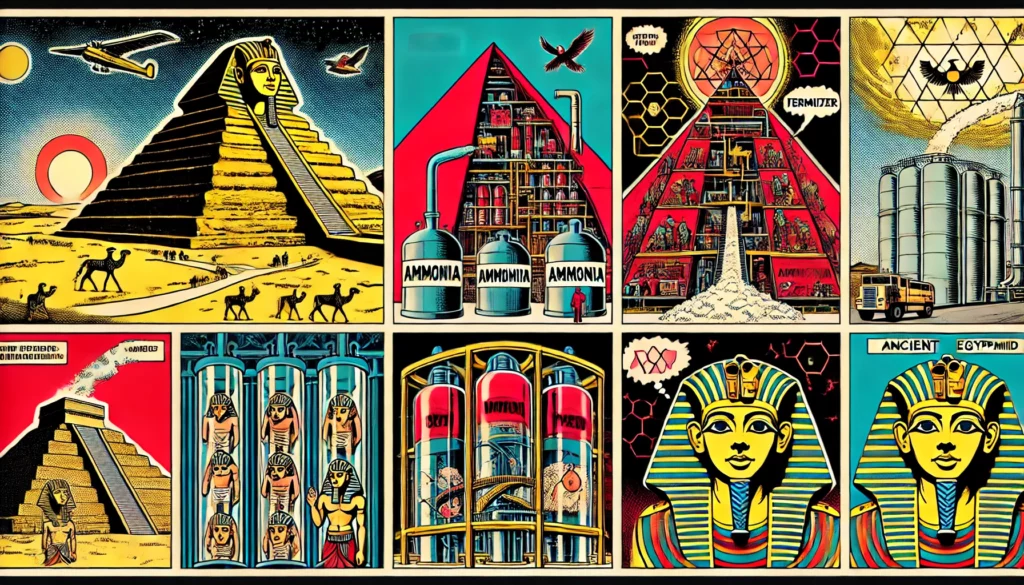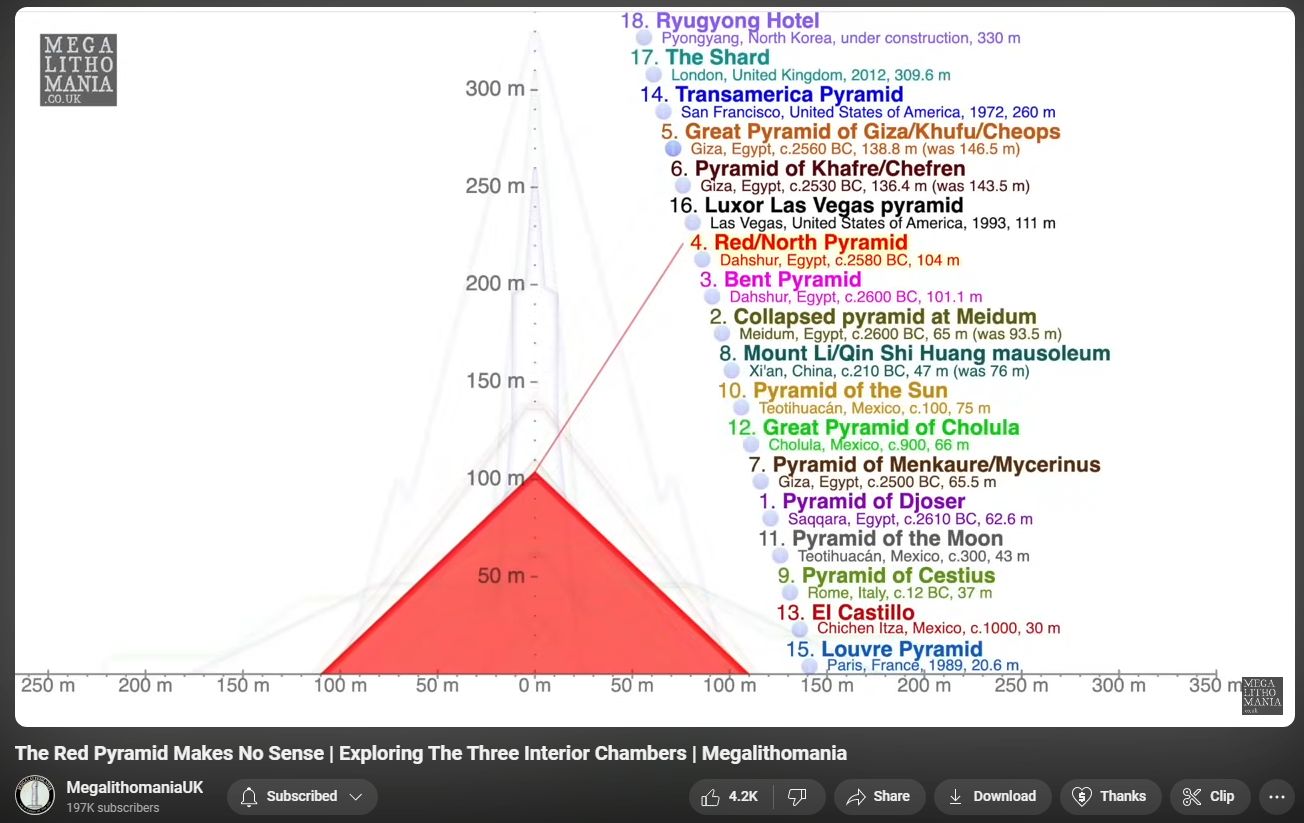Pyramids rethunk as industrial scale Chemical Production Machines
The one correct theory perfectly explains all known everything, and everything yet to become known. ‘Pyramids for chemical production’ does that.
Red Pyramid produced aqueous ammonia.
Bent Pyramid produced fertilizer.
Egypt was land of black chemistry. Black soil? Black magic? Soot? Residue? Black people?
Poured-in-place geopolymer not just precluded having to hew and move and set heavy ‘stone’ blocks but also allowed the gas-tight / fluid-tight sealing necessary. The massive size was massively heavy, allowing for high working pressures to be maintained. EVERYTHING fits this theory of LAND OF CHEM / Geoff Drum.
27:20 – How did they manage to get up and do patch work, repairs, or finish the upper levels, after (electrically insulating) white limestone was applied at lower levels? Hot air balloons, lifted by burnt methane gas, weighted with rocks in the basket, lifted to certain level where hot air was purged (to lower to weighted basket against the pyramid surface). This could also explain how they lifted the pyramidion to the top; presumably, this was replaced / kept sharp to attract lightning if that was indeed one power source…
A pyramid explorer once said “the interior of the pyramids are not ceremonial, they’re industrial”.
All of this is quite possible. The Egyptians were very wealthy people and their wealth came from farming. While the soil was rich in nutrients from the Nile, adding man made chemicals as in modern farming would really get things growing. Would ancient people put so much effort into something that wasn’t religious? Of course they would. They weren’t much different from us. Look at where we put our biggest efforts, dams, solar farms, agriculture, even football stadiums!
Corbelled ceilings allowed efficient gas pressure increase as liquid filled lower part of chamber.
While Geoffrey Drumm does suggest that the ammonia produced in the Red Pyramid could have been used for farming as a fertilizer, it wasn’t the primary purpose. He proposes a more complex and interconnected system where ammonia was a crucial intermediate product in a larger chemical production chain within the pyramid complex. In essence, Drumm’s theory positions the Red Pyramid as a sophisticated chemical plant where ammonia was a vital intermediate in a complex production process, with natron as the primary output and fertilizer as a potential secondary application. Furthermore, it’s possible that the Red Pyramid, and perhaps other pyramids as well, went through multiple phases of construction and repurposing over time. The initial construction could have focused on creating the core chambers and shafts necessary for chemical production, as Drumm suggests. Later, the existing structure might have been encased within a larger pyramid to serve as a monumental tomb, a symbol of royal power, or a religious temple. Some archaeological evidence supports the idea of phased construction in pyramids. Also, bats don’t produce ammonia on an industrial scale. Name one industrial plant that uses bats today.
I think John Cadman’s work on the subterranean chamber/ram pump theory of the great pyramid could be a solution to your pressure problem. His model generates a tremendous amount of pressure, I wonder if it would be enough to power the hydraulic needs of the greater giza power plant?
Haber process. High temp and pressure. The chambers were cast stone pressure chambers. The mass of the pyramid was required to contain it. The underground plumbing and structures are every bit as substantial as the above ground structures.
DAVIDOVITZ proved decades ago that poured-in-place liquid geopolymer explains perfectly HOW built (by not requiring any massive stonework) and HOW sealed (aka, perfectly tight seals between poured stones).
No questions. DAVIDOVITZ proved decades ago geopolymer prefectly explains all evidence of HOW they were built.
No sealant required. DAVIDOVITZ proved decades ago that poured-in-place geopolymer answers 100% of HOW the blocks / sealing was done.
I’ve been following Geoffrey Drum for a while now and watched every video in order – some more than once to understand them better. It’s a big time commitment but it’s the only way to truly understand his work. His hypothesis for the function of the pyramids and other structures around the world strikes true with me. It’s a major paradigm shift in my humble opinion. And like all good hypotheses it can be scientifically studied and evidence gathered to prove or disprove it.
The small passages would collect water. Water from rain, made salty by slight erosion. Lightning attracted by sharp-edged pyramidion up top, atop wet stones, ‘insulated’ by limestone cover-stones. Hot air balloons lifting sacks of water to pour into passage entrance, gravity did the rest. Poured-in-place geopolymer (per DAVIDOVITZ) explains away need for working massive blocks and also how gas-tight sealing was accomplished. Farming / money motive explains human drive; imagine the pride of working on something that helped to feed many.
Alchemy is a big part of what was happening ritually and religiously throughout the history of Egypt as we understand it. I like Drumms theory. It makes sense in many ways. None of it requires advanced technology nor magic to explain.
Pyramids were machines used to process gold for the Annunaki. That Pyramid made one product, it was taken to the other Pyramid which used it mixed with other stuff to make another product, and then that final product taken to the smaller pyramid to make a final product. It’s a gold factory. Pharoahs who are buried in Pyramids are always covered in gold, surrounded by gold artifacts, and placed in massive sarcoffuguss, the sarcoffugus is actually the gold collection pot and the Annunaki collected it to take to their planet, or the heavens as the ancients seen it. The Pharoahs covered themselves in gold and were buried in the pot hoping they too could go to the heavens with the Annunaki God’s. Over time the pyramids have been scraped clean by tourists and looters. All that’s left is the bones of the machine. Where and how do you think the Egyptians got all that gold from? They made it, they operated the Pyramids.Show less
Look into MICHAEL TELLINGER and his hundreds of thousands of massive stone silos all over southern Africa. Annunaki, gold, etc. Somebody was making the food to support the makers of the gold and citizens of societies. Just like now, that required farming, fertilizers, etc. Nothing anyone has yet theorized makes more sense (IMHO).
Most of our largest buildings today are factories… it only stands to reason that the largest ancient structures would also be used for the production of something. As they say follow the money, there has to be a return on that literally massive investment.
Dr Joseph Davidovits and Margie Morris wrote the book The Pyramids: The Enigma Solved. The main premise is the blocks used in the pyramids were made using a type of concrete.
Granite isn’t porous, and limestone isn’t porous enough, so neither could have absorbed ammonia, even after being immersed in it supposedly for the hundreds or even a thousand years or so while the pyramid was supposedly used to produce ammonia. Nor would ammonia have somehow stuck to the surface of the stone all these years–it would have evaporated long ago, leaving no trace of odor. And as this video repeats several times, the stone blocks fit together so tightly that no significant amount of ammonia could have seeped between them and remained there for thousands of years for us to smell today–even if some ammonia has been able to seep inbetween the seams, it would have entirely evaporated not long after the pyramid was no longer in use as a supposed ammonia manufacturer, since evaporating entirely is what ammonia does.
While Geoffrey Drumm’s theory is intriguing and reflects a creative interpretation of archaeological data, it lacks substantial support from both mainstream Egyptology and demonstrative scientific evidence. The theory relies heavily on interpretation of architectural features and anecdotal evidence rather than on direct archaeological findings or historical texts. For such a theory to gain wider acceptance, it would need rigorous scientific investigation, including chemical analysis of the pyramid’s materials, detailed examination of the structure’s design from an engineering perspective for chemical processes, and perhaps the discovery of related artifacts or inscriptions that directly link the pyramid to chemical manufacturing. Until then, Drumm’s ideas remain speculative within the broader academic community of Egyptology.
The fact that most entrenched minds disregard new ideas proves nothing except the vileness of set minds. LAND OF CHEM channel presents 100+ in-depth video detailing the processes, theories, evidence.
How did they get that ammonia out from the last chamber???
Theory states it was aqueous ammonia, dissolved in water…also heavier than water. Lightning kick-started process. Piezoelectrics and gravity drove it. Mass and geopolymered seals kept it all together. “Well” played some part in the draining of the finished ammoniated water?
What would they use amonia for ?
Intra-process in chemical production at other pyramids, also nicely explained by LAND OF CHEM theories. Ammonia also used in fertilizer production. See modern HABER PROCESS.
I think a small but accurate scale model to demonstrate the complete process would do more to promote your hypotheses. No one ever does that as far as I’ve seen.
Small scale will not provide the necessary mass to hold the machine together. Also, atmospheric voltage gradient requires great height, as does piezoelectric effect. The slopes differed to tune the mass and thereby the operating voltages.
What was ammonia called in Egypt?
AMENia ?
I’d put my money on the ammonia smell being due to the pyramids being where all the ancients pee and poop went.
Fact that Louvre 1600 rooms had no bathrooms perhaps suggests maybe a Different Kind of creature was employed…no need for alimentary ailments such as feeding nor excrement management…
Why build the bottom 2 from side to side and the top one from front to back? If you’re synthesizing chemicals then why not have all 3 chambers facing in the same direction? There’s some significance to the way the chambers are facing.
Piezoelectric perhaps affected by earth magnetism. Also solar heating of structure. Placement matters, closer or further from ‘the flame’ — after all, pyra mid does mean ‘fire center’. Just a guess.
Interesting that each pyramid seems to have a chamber with a rough, rugged floor structure.
Contact with relatively more conductive rough surface (to increase conductive surface area)…may have played a part in piezoelectric design of the overall.
9:24 Look how the stone on the right looks as if it was liquid at one point.
DAVIDOVITS 1970s proved geopolymer makes most sense, not using massive blocks but pouring them there like concrete just like We have always done — blocks were poured-in-place, tight seals were desired side-effect.
Compared to what they built, the pyramid-builders could easily have built taller ‘corridors’ if they were intended for people to walk along for any reasons : for ceremonial reasons they would have needed enough room for a head-dress as well as a priest walking erect!
No evidence supports burial chambers or anything like that — that was all 100% total baloney for weak minds and zero internet age ability to share videos and muse theories together.
There has to be other chambers in there. There’s too much space to just be filled with stones. Has sars or muon technology been directed at the Red Pyramid?
Not if the needs were mass to keep in pressure and also act as heat reservoir (solar and reactive) and also to generate piezoelectric effect voltages. Seems that the slopes were chosen specifically to set the overall mass, seems likely for some good reason(s).
Funny that no one seems to have mentioned the most likely cause of ammonia smell in the chambers……..the BAT guano!!!!
Funny the constant mention of bat dung, and yet zero — ZERO — photos or eyewitness testimony or videos ever show any — NOT ANY — such bat dung.
Unless someone makes a model and proves these theories, it’s just wild guessing.
Model insufficient mass to keep reactions pressurized, nor piezo-electric powered, nor heat reservoir. Also, height required for lightning and atmospheric voltage gradient.
How come the purpose of the pyramids was lost? Isn’t there something written that explains the functionality ?
Those writings exist under Vatican and are purposely kept to keep most down, subjugated, paying tithings, praying to intercessor before Jesus. Advances in technicals, metallurgy, etc allow same effects to be gotten in smaller, cheaper, faster ways (see Haber Process).
They were hydraulic ram pumps for lifting water.
Then they would all be same design, to do same function. Differening chemical processes, however, require differing designs, arrangements…to achieve differing results.
Could not the weight of huge stones create the piezoelectric effect on a continuous stream ?
Seems reasonable that piezoelectrics were designed into the structure as means to propel the reaction(s).
It will all make sense once you view these for what they were. They were never tombs. They were machines made of stone.
So was Egyptian society just an ancient corporate structure?
Didn’t the top of the pyramid have a gold top on it.
Possibly just gilded, tho the seemingly likely lightning strikes would melt both solid gold and gilt gold.
Maybe just produce a small replica and perform the supposed chemical reaction.
Mass is required to contain pressures, to give heat reservoir, to generate piezoelectric effect. Height is needed to attract lightning and also develop atmospheric voltage gradient. Small-scale models unlikely to work properly if at all.
Sne-feru means: double harmony. It is not someone’s name.
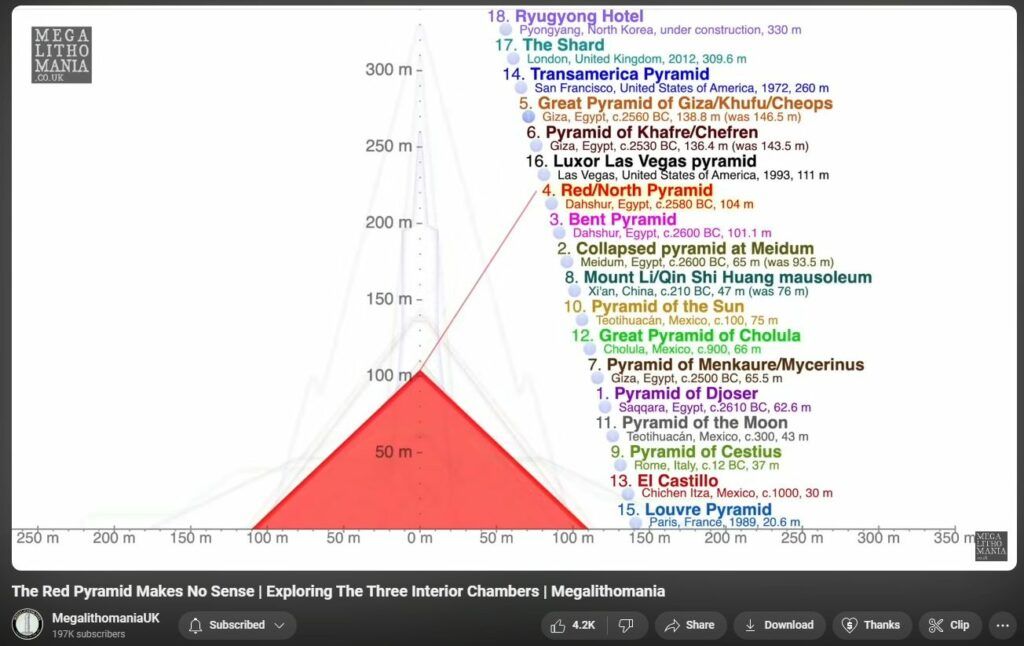


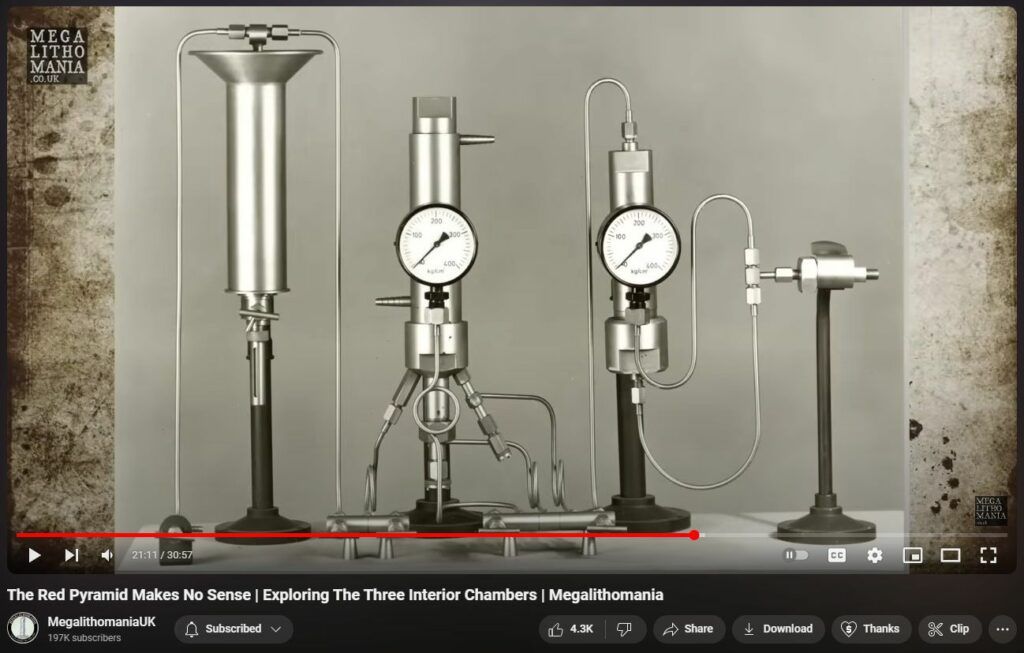

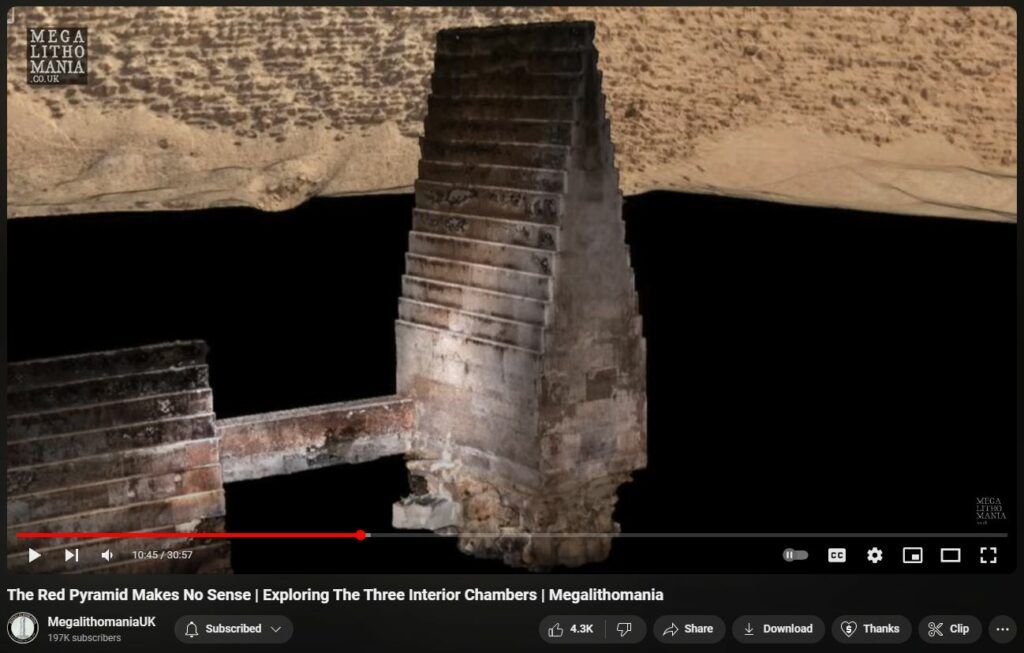
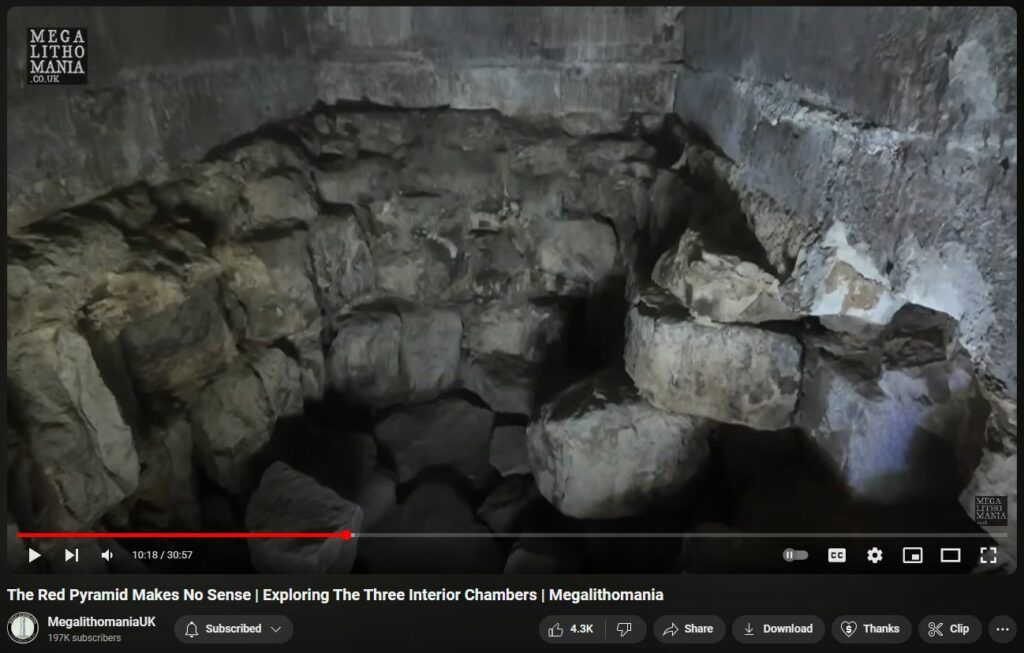

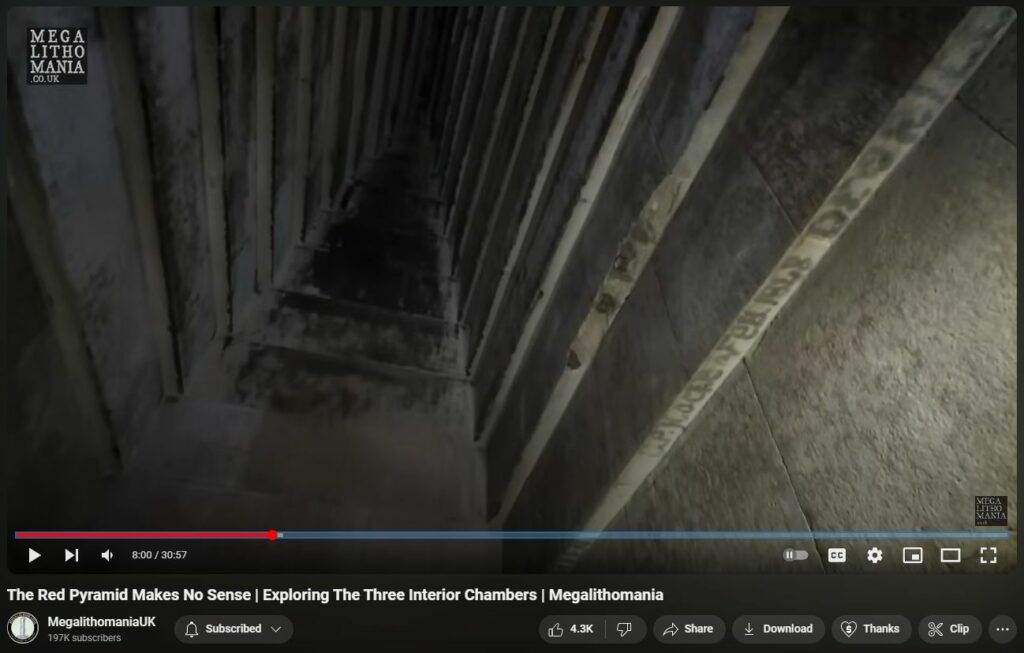

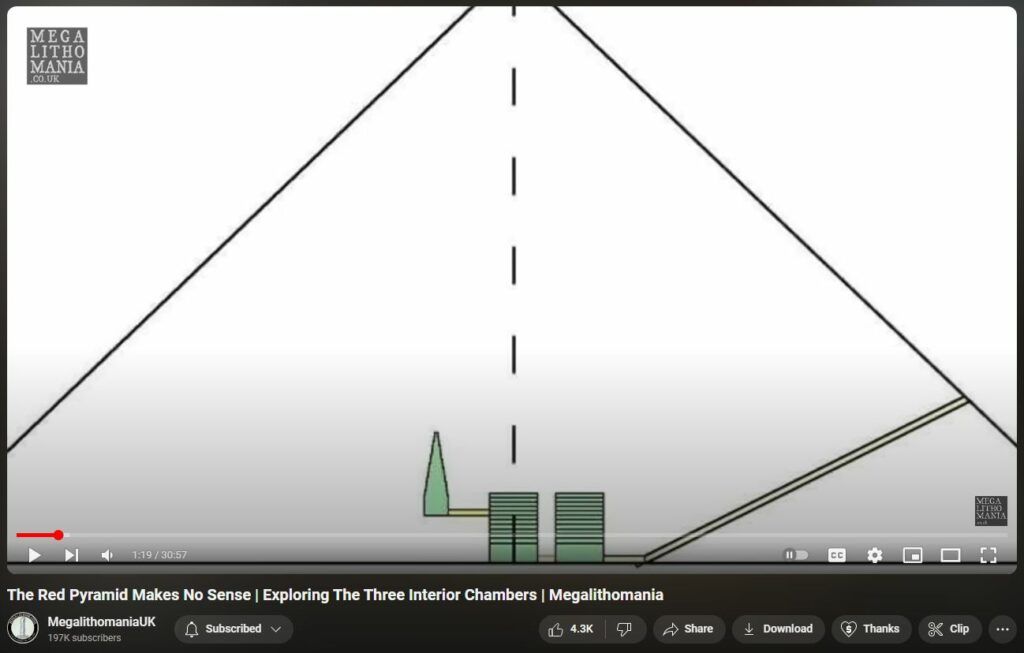
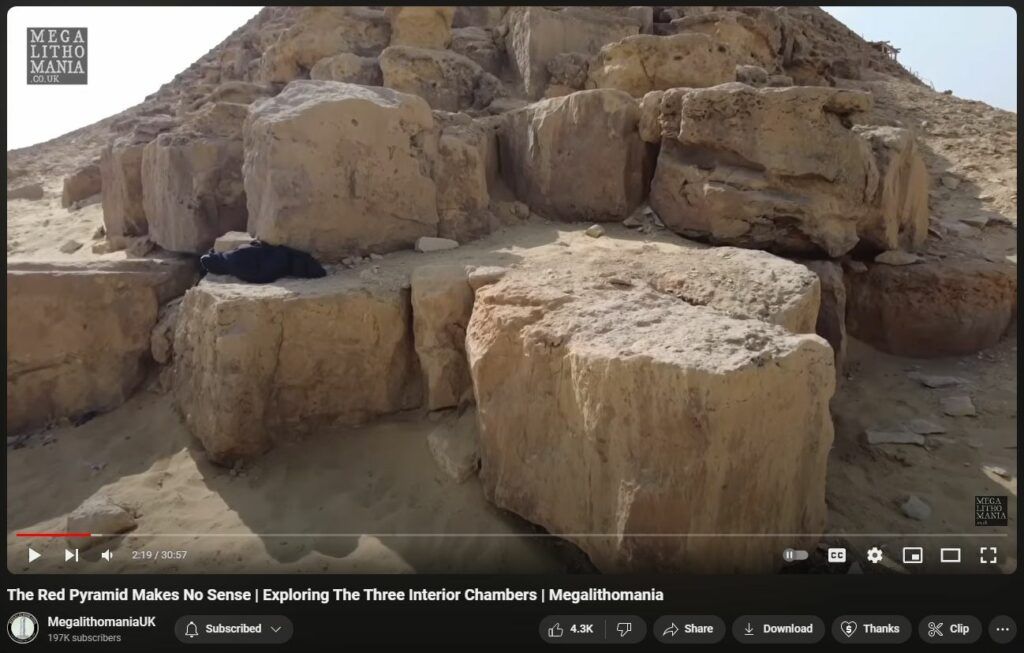
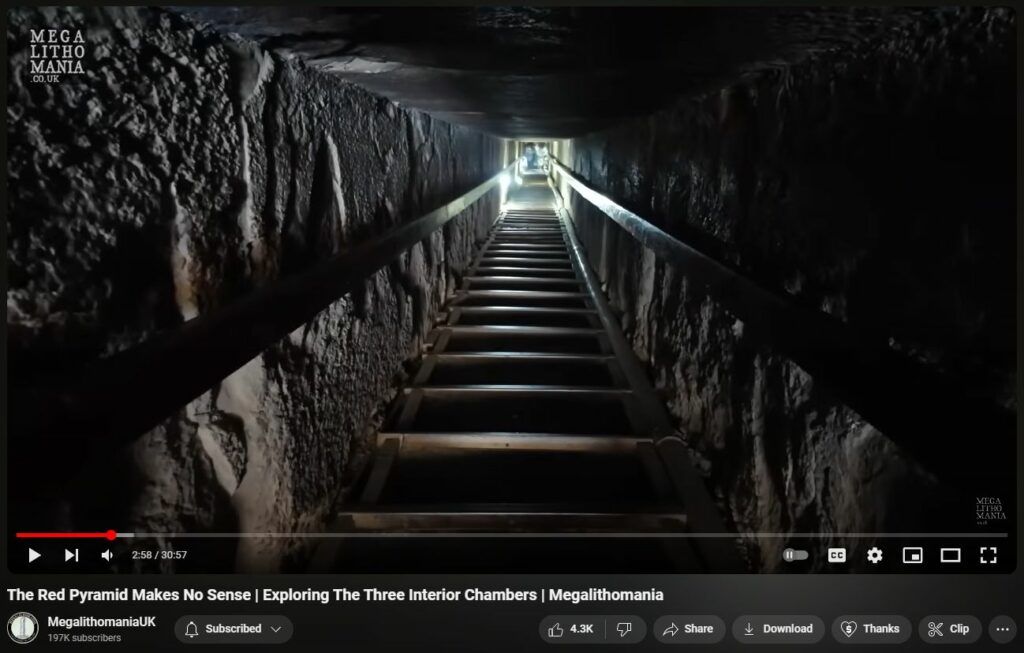
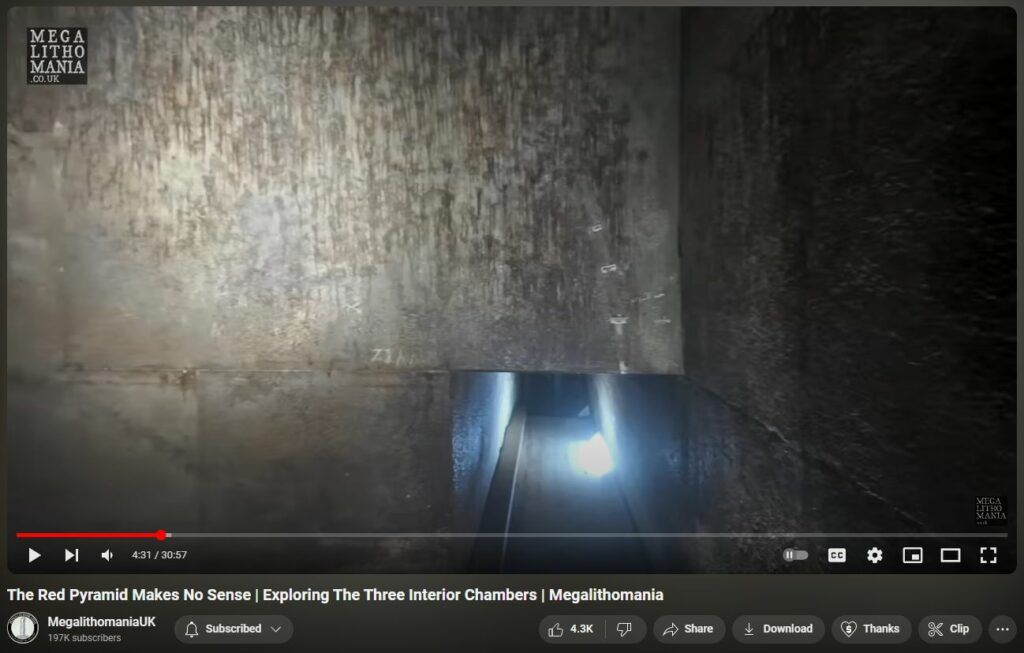


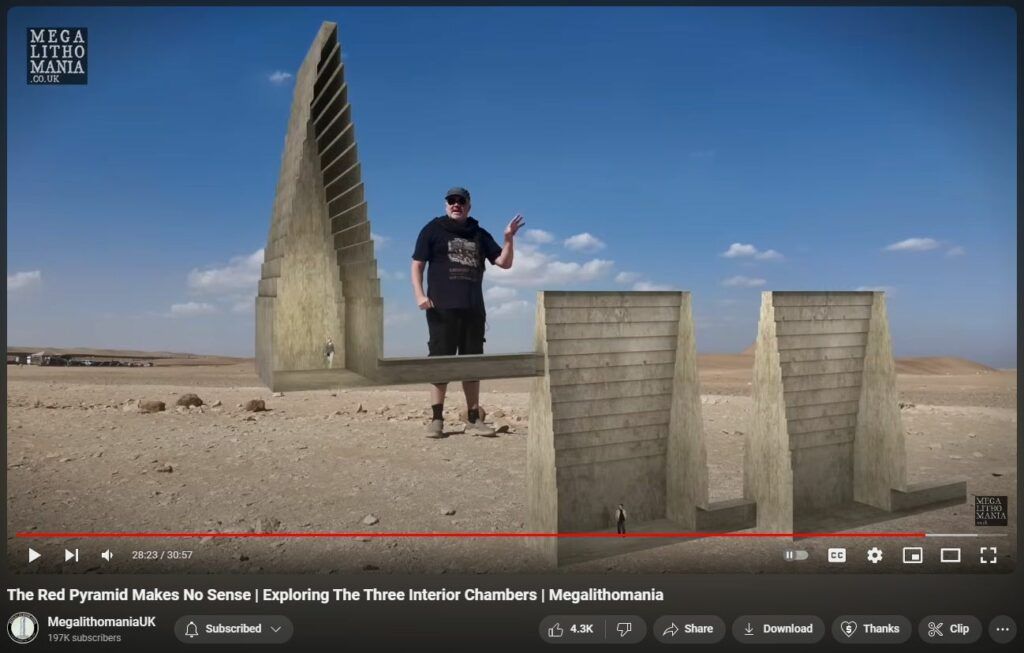
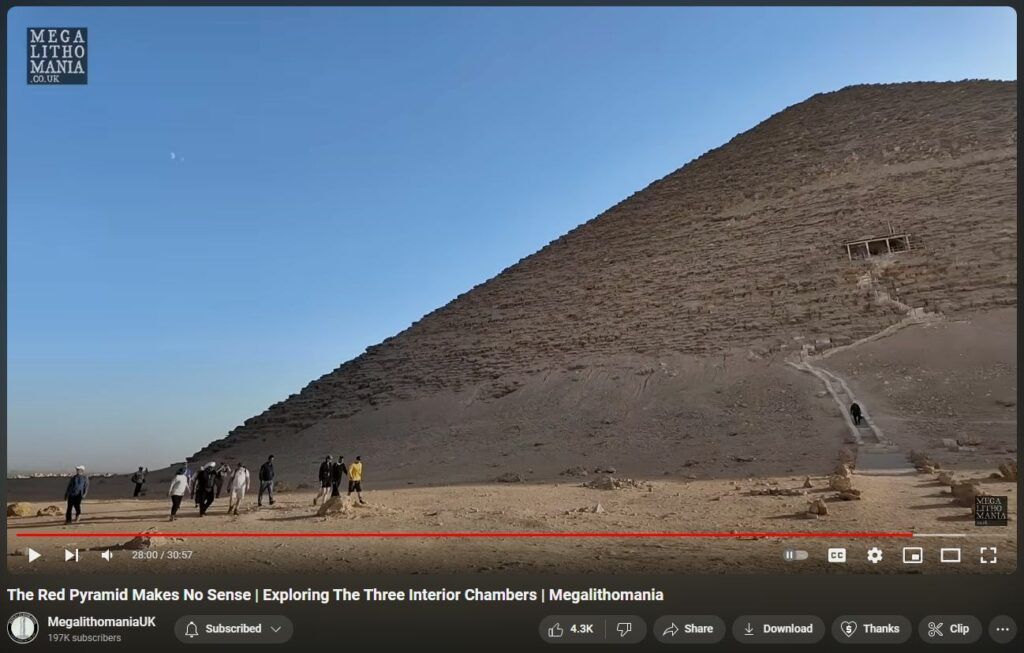
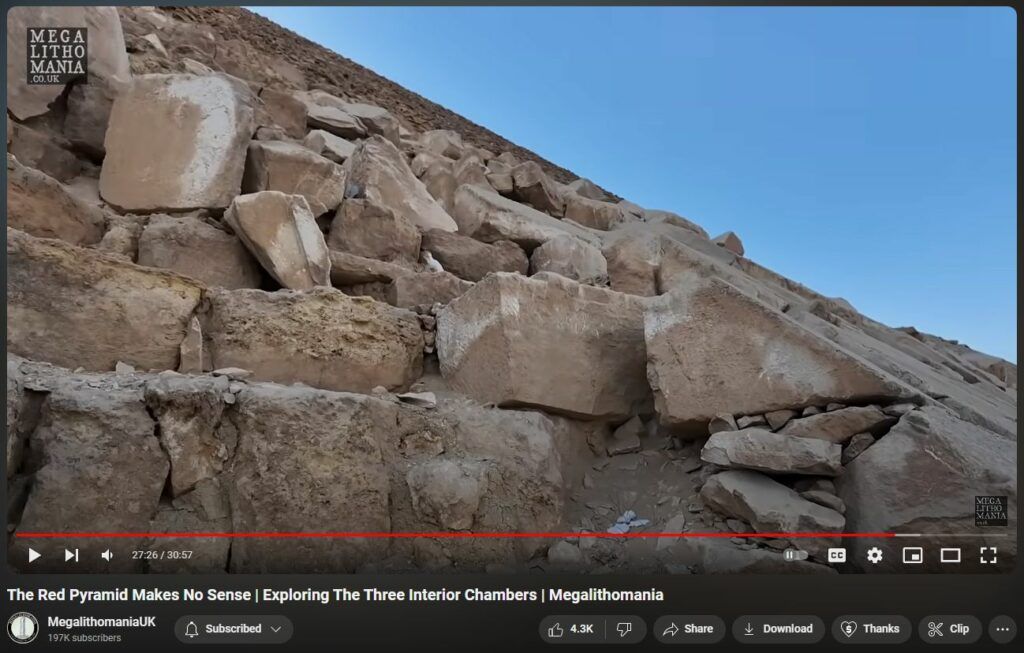
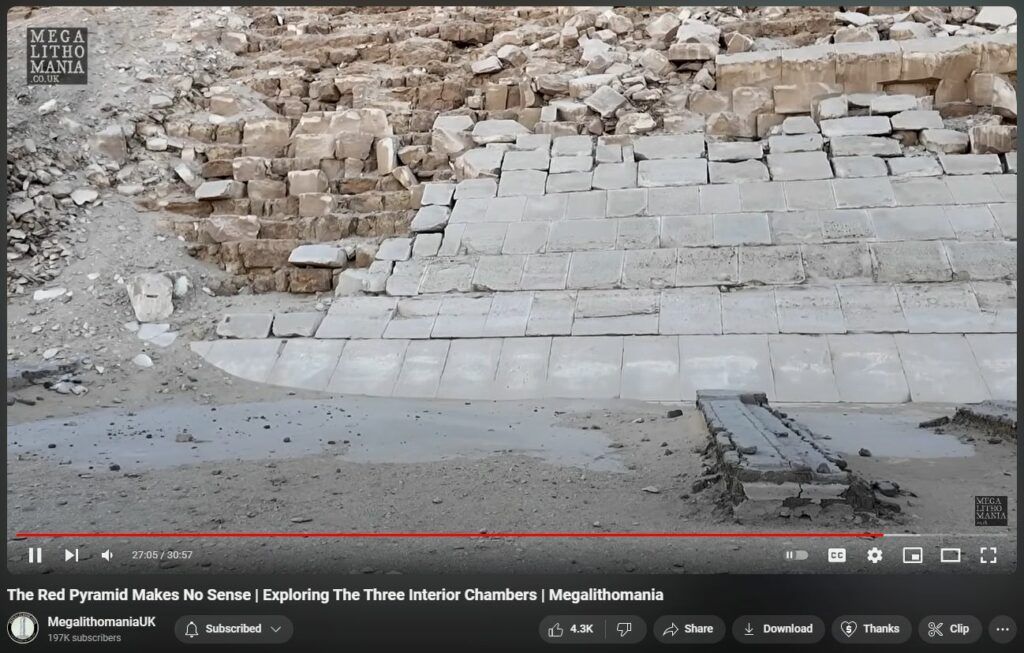
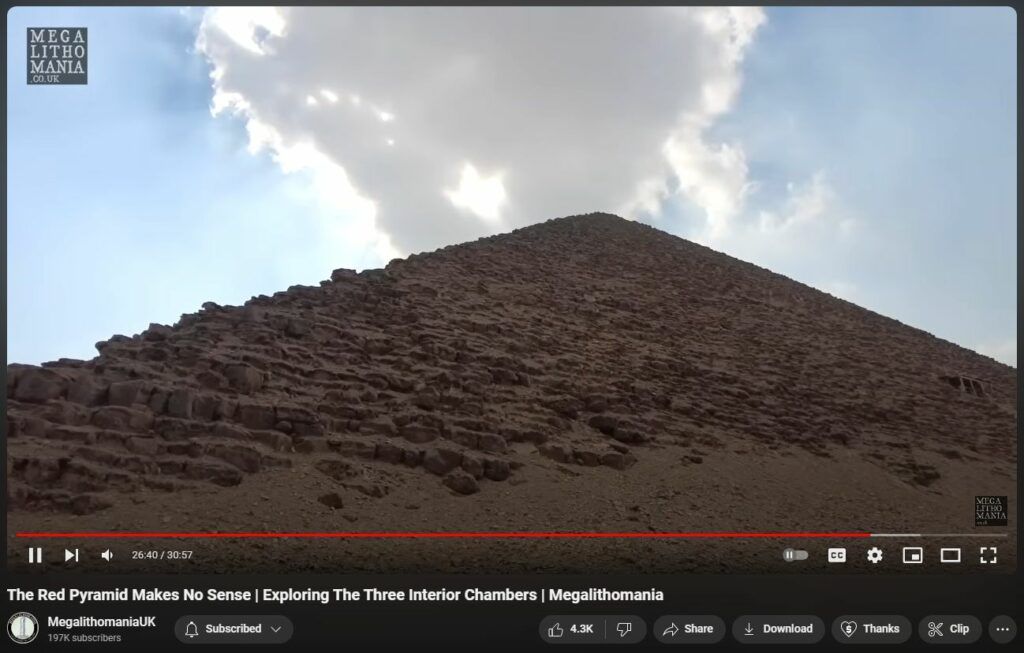
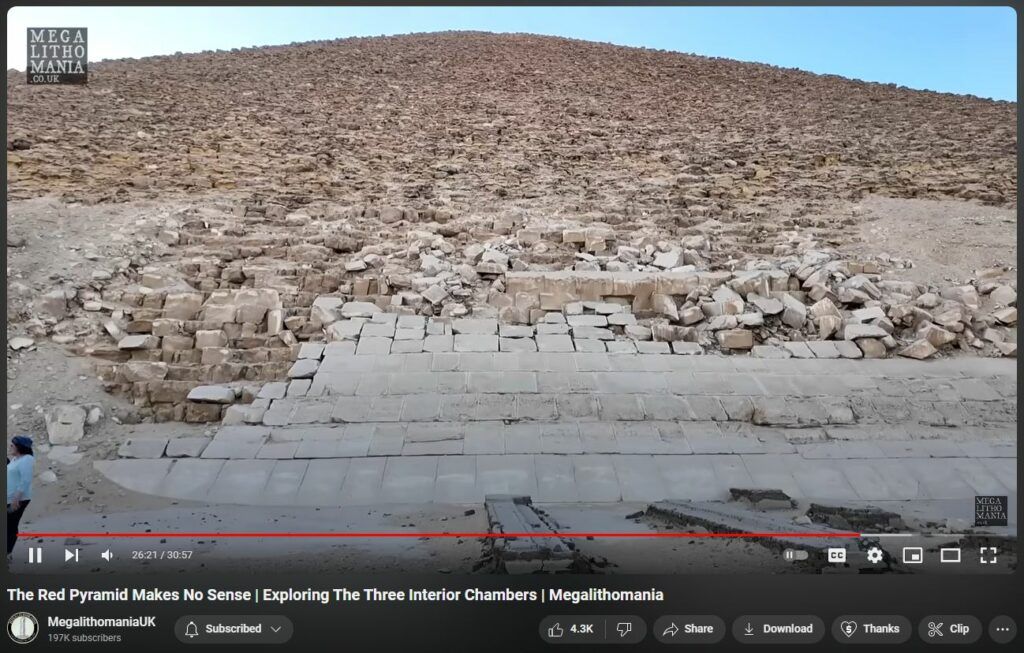
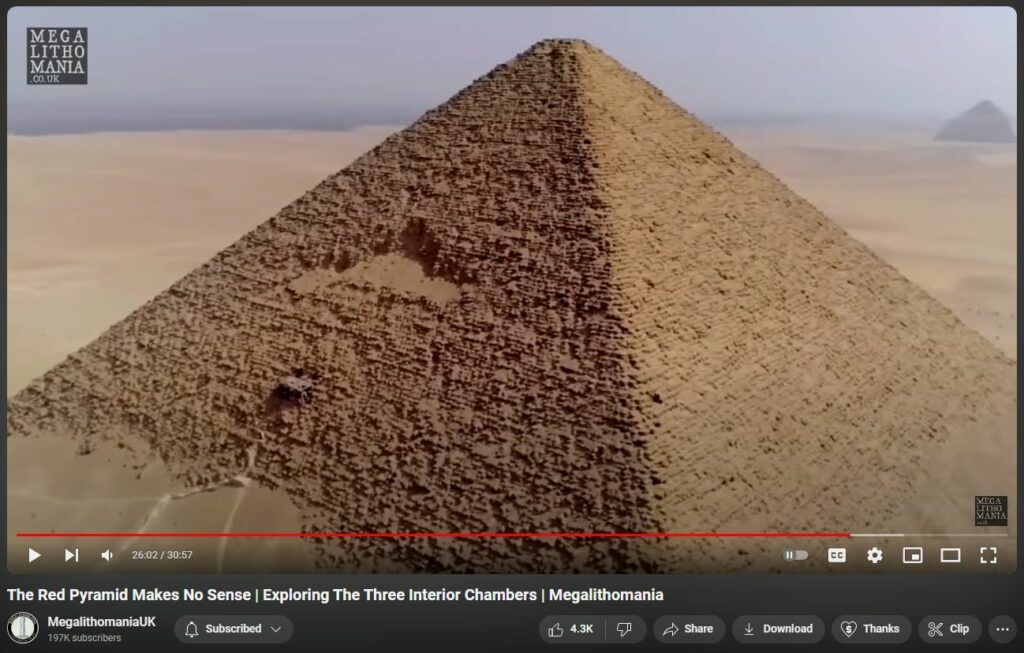
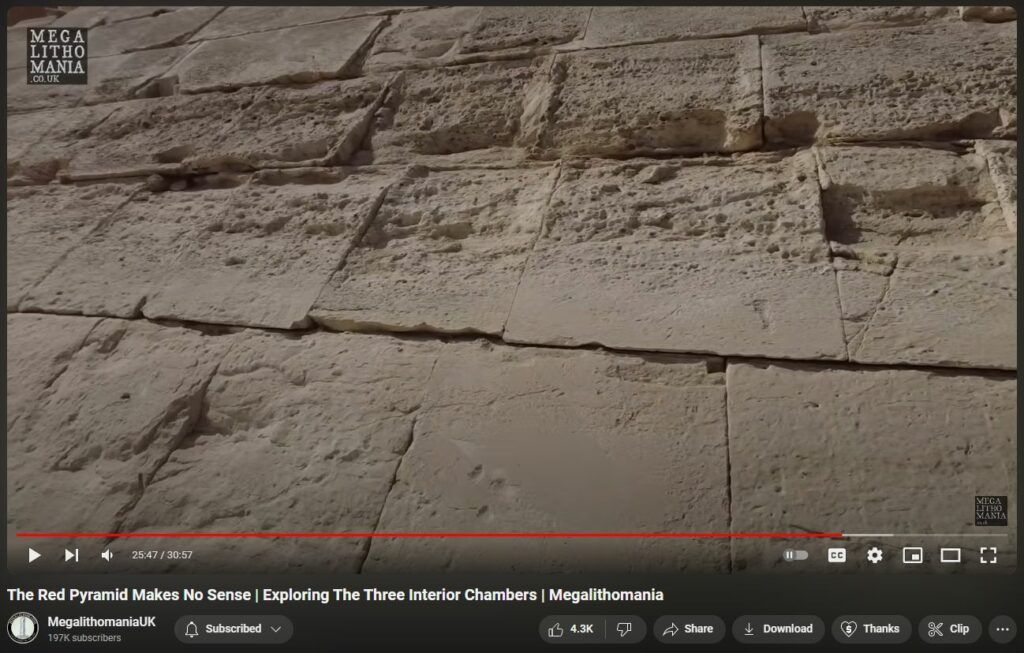
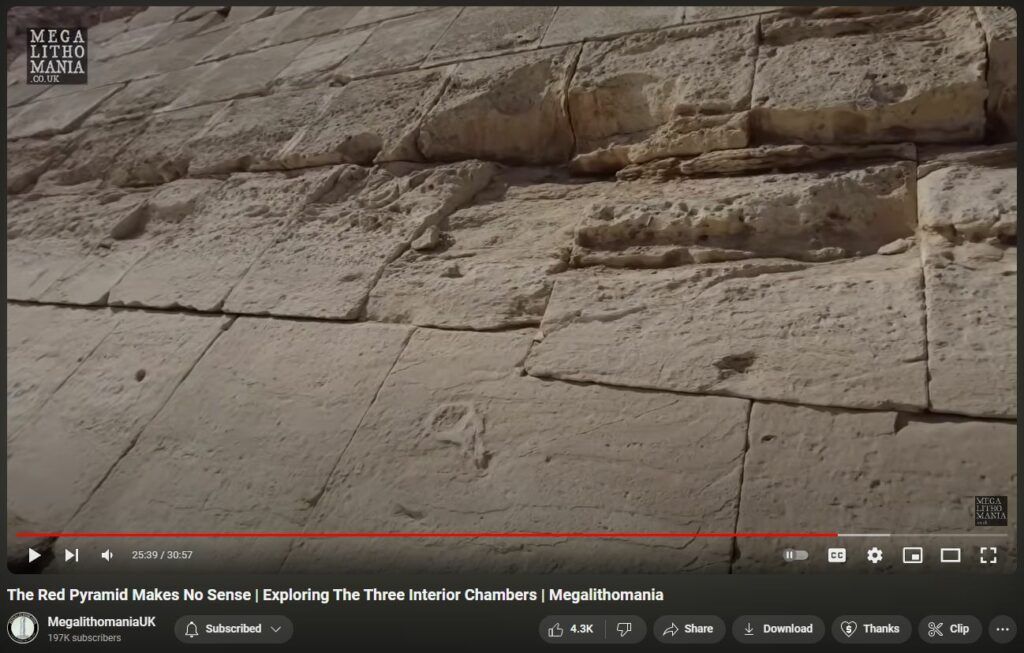
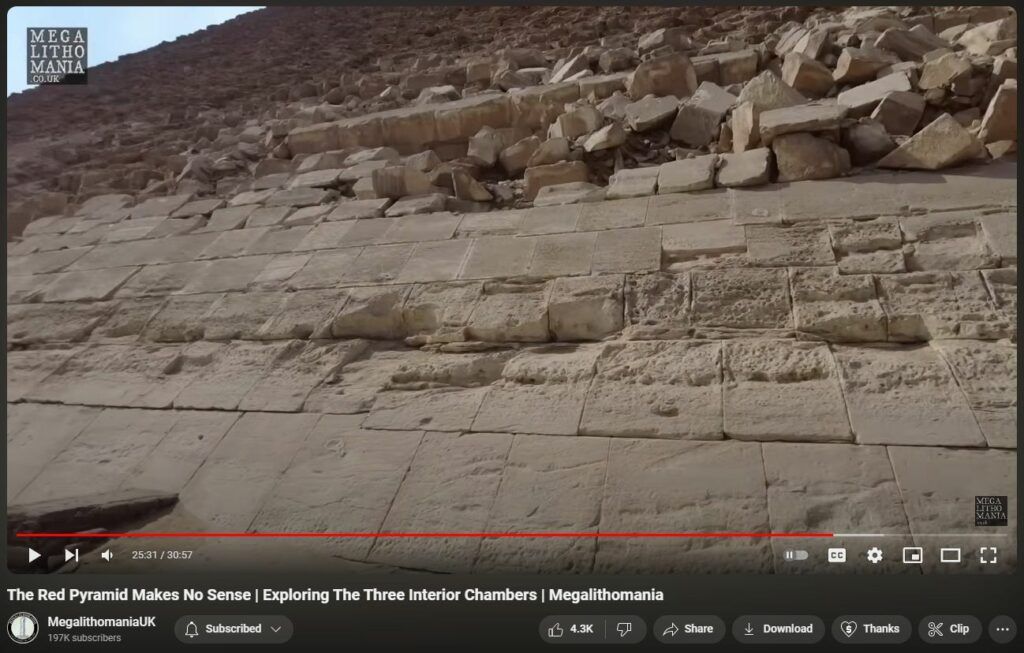
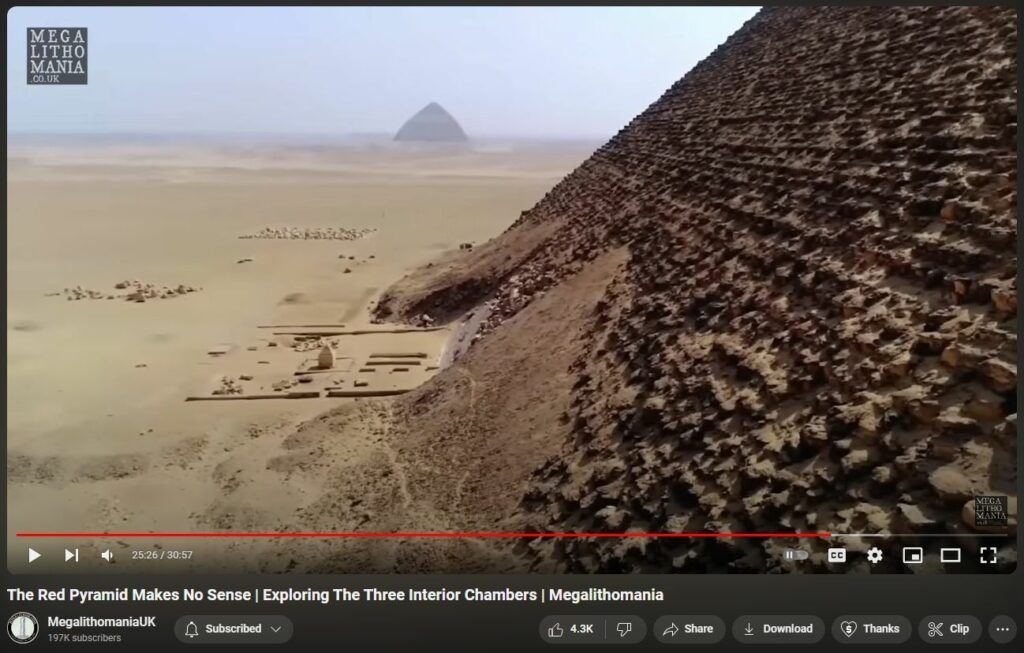
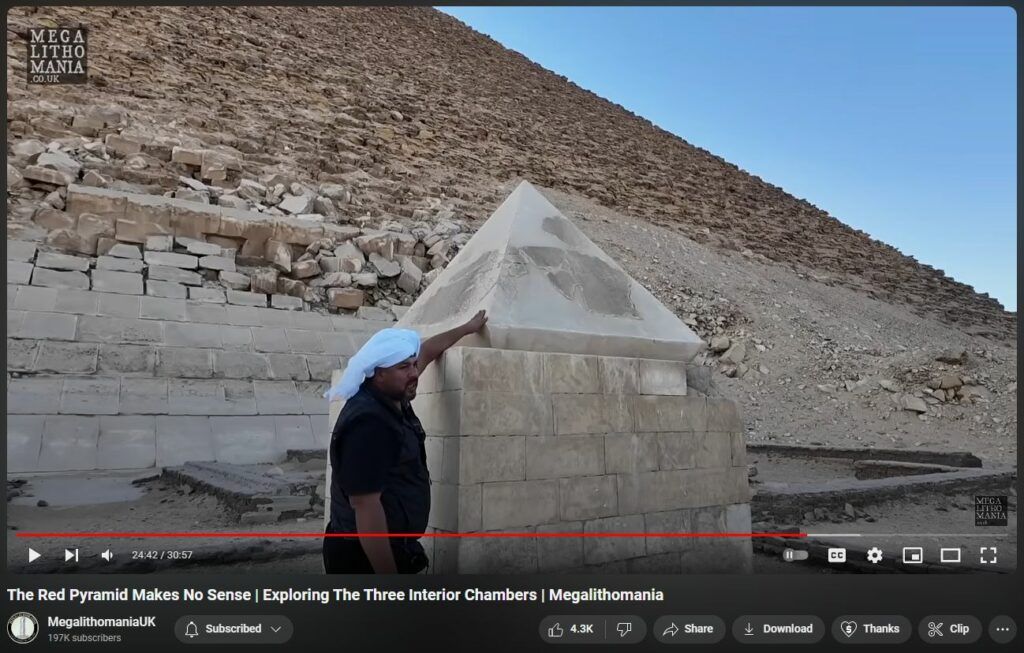
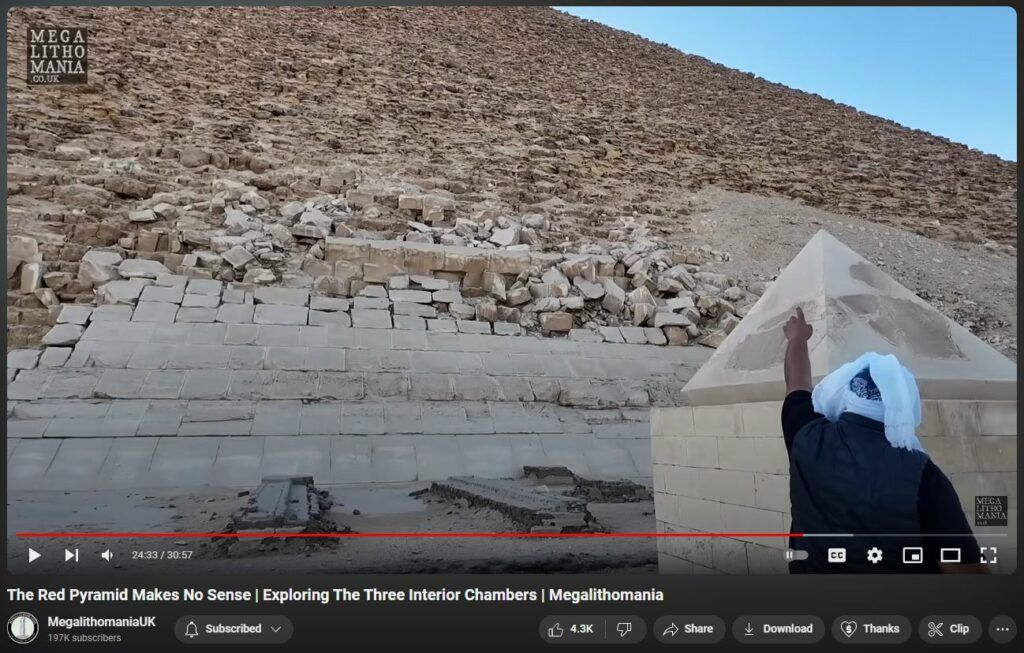
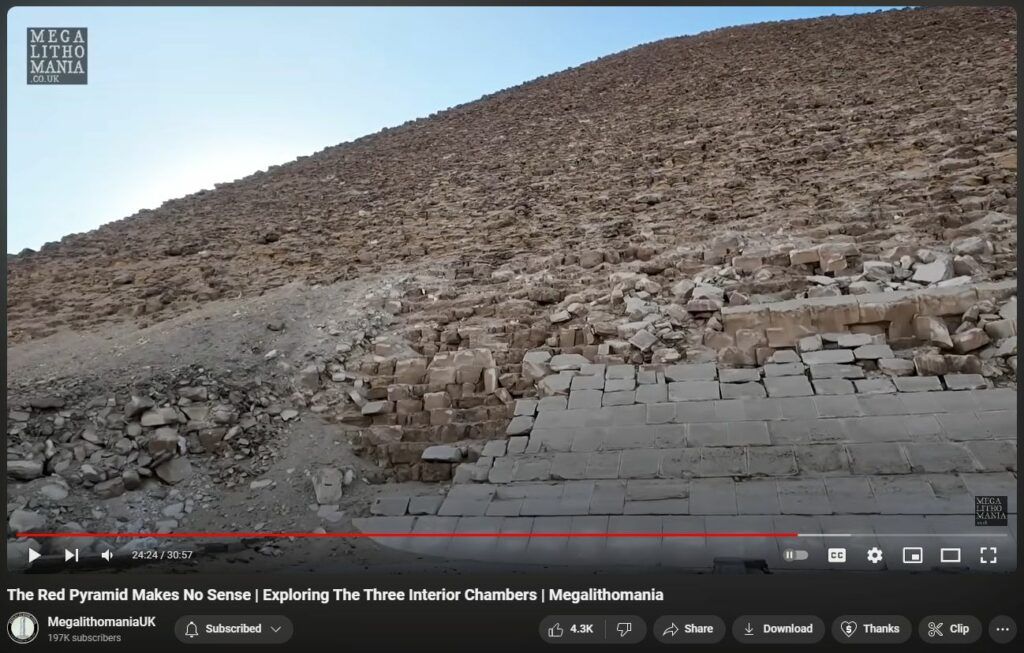
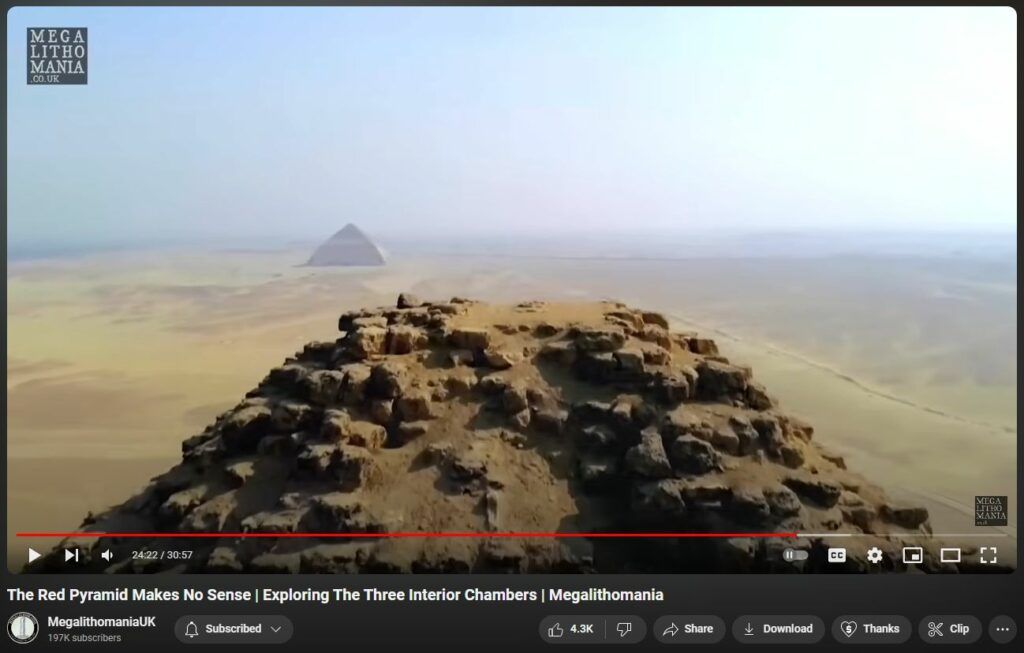
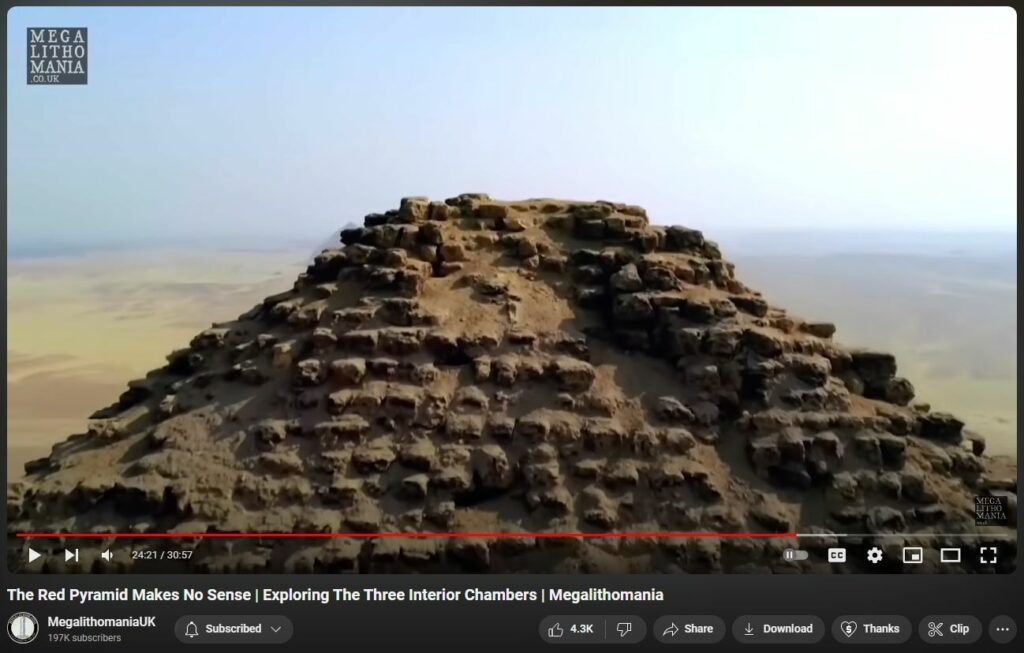
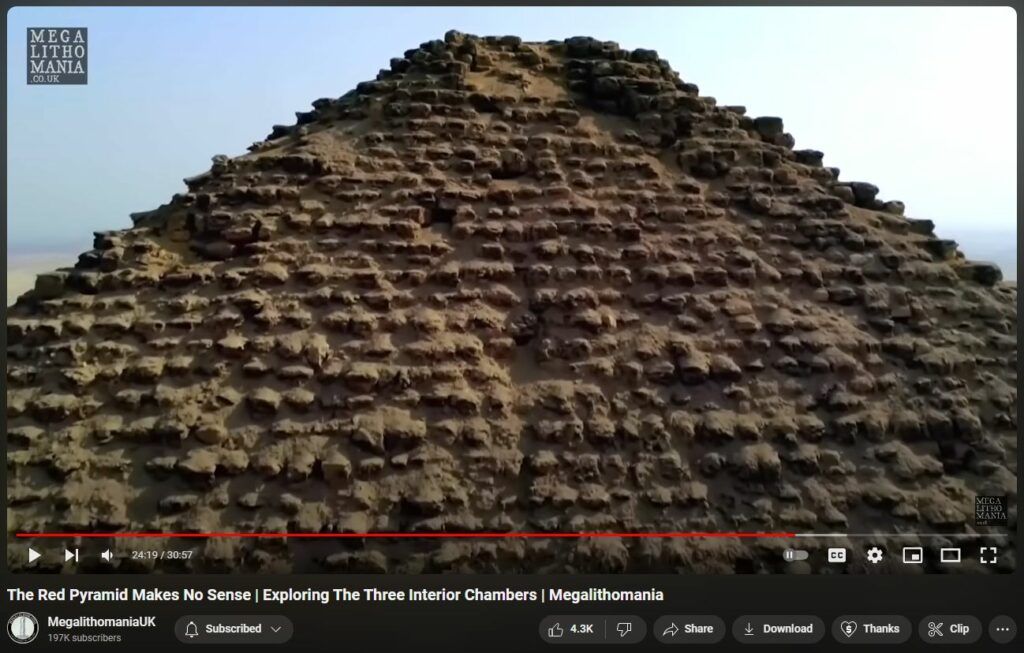
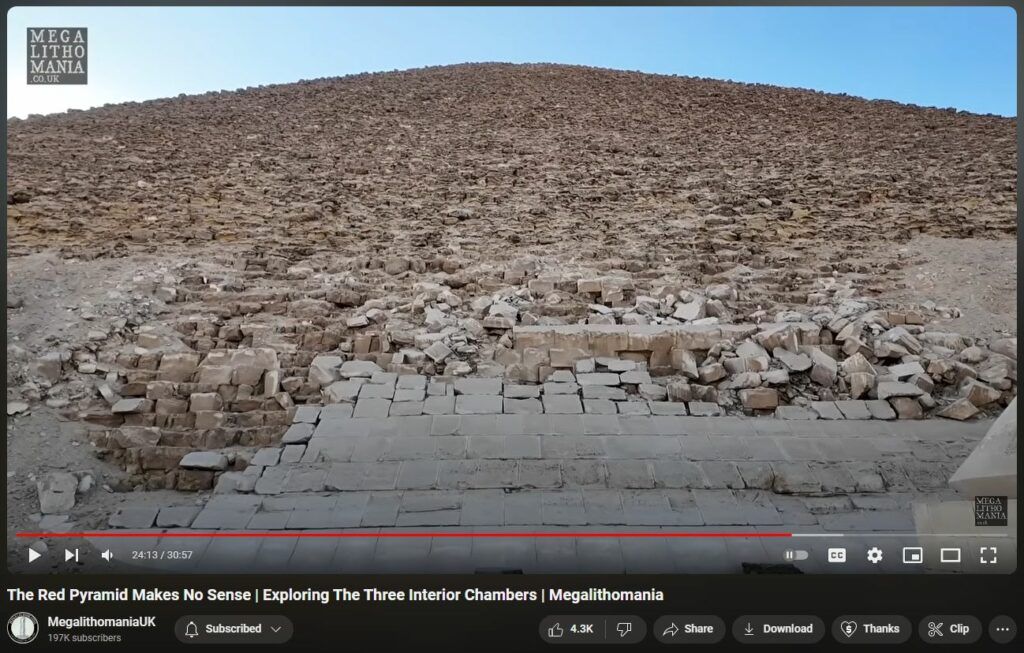
The article “Pyramids rethunk as industrial scale Chemical Production Machines” explores the hypothesis that ancient Egyptian pyramids functioned as large-scale chemical reactors rather than solely serving as tombs or ceremonial structures. This theory, notably advanced by researcher Geoffrey Drum, posits that each pyramid had a specific role in a sophisticated chemical production network.
Key Points of the Theory:
- Red Pyramid and Ammonia Production: The Red Pyramid is suggested to have produced aqueous ammonia. Drum’s research indicates that the internal design and residual chemical evidence support this function.
- Bent Pyramid and Fertilizer Production: The Bent Pyramid is proposed to have been involved in producing fertilizers, possibly converting ammonia into ammonium bicarbonate, which would have been beneficial for agricultural practices.
- Geopolymer Construction: The article references Joseph Davidovits’ work, suggesting that the pyramids were constructed using poured-in-place geopolymer concrete. This method would have allowed for gas-tight and fluid-tight seals necessary for chemical reactions and would explain the massive size required to maintain high working pressures.
- Corbelled Ceilings and Pressure Management: The design of corbelled ceilings in the pyramids is interpreted as a means to efficiently manage gas pressure, with liquid filling the lower parts of the chambers during chemical processes.
- Integration with Egyptian Mythology: Drum correlates the functionality of the pyramids as chemical reactors with Egyptian myths and temple initiation rites, suggesting that rituals of rebirth and transformation might be metaphors for biochemical processes.
Supporting Evidence:
- Ammonia Odors and Wall Stains: Observations of ammonia-like odors and stains on the walls of certain pyramids are cited as evidence supporting the chemical production theory.
- Advanced Chemical Engineering: The theory implies that ancient Egyptians possessed sophisticated chemical engineering knowledge, enabling them to produce substances like sulfuric acid and hydrochloric acid for various industrial applications, including metal extraction.
Critiques and Considerations:
While this theory offers an innovative perspective on the purpose of the pyramids, it remains a subject of debate within the academic community. Mainstream Egyptology traditionally views the pyramids primarily as tombs and ceremonial structures. Critics argue that more direct physical evidence, such as chemical residues or ancient documentation, is necessary to substantiate the chemical production hypothesis.
In conclusion, the article presents a compelling argument for reinterpreting the function of Egyptian pyramids, suggesting they may have served as industrial-scale chemical production facilities. This perspective encourages a reevaluation of ancient technological capabilities and the multifaceted purposes of these monumental structures.
